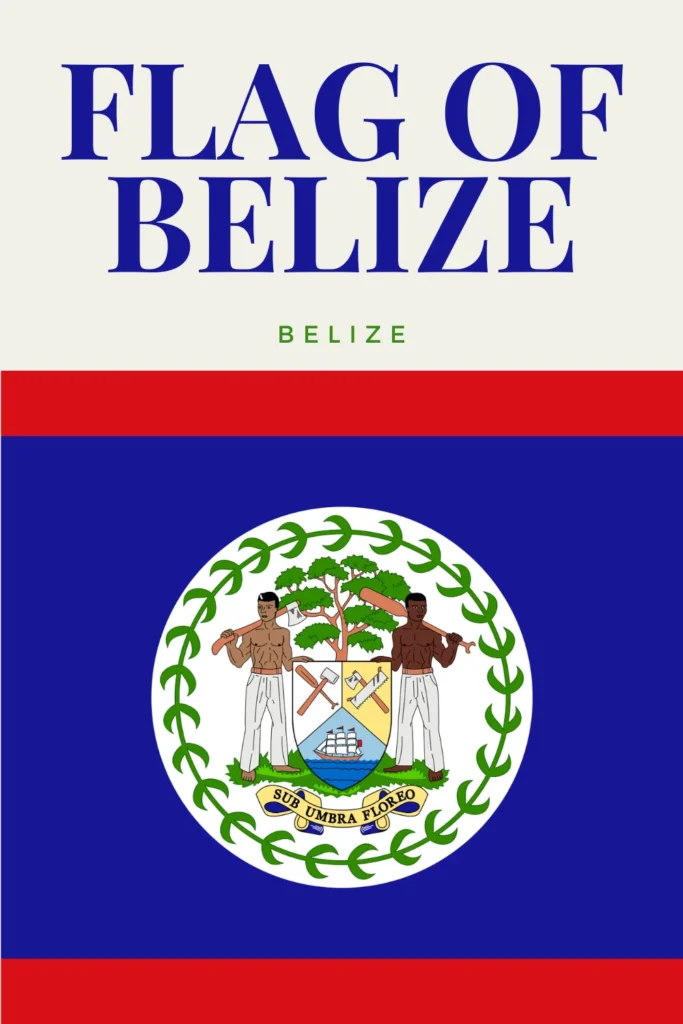Flag of Belize
The Flag of Belize is a symbol of unity and diversity, adopted on the 21st of September 1981, featuring a royal blue field with a narrow red stripe along the top and bottom of the flag with the coat of arms of Belize in the centre.
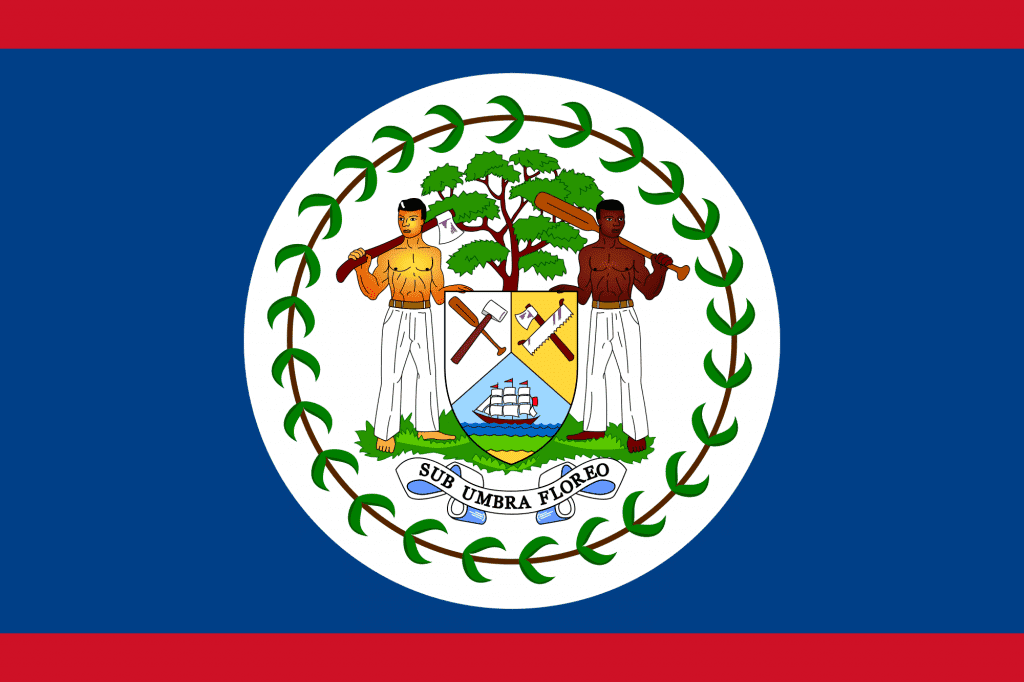
Design and symbolism
The flag of Belize features a royal blue field with narrow red stripes at the top and bottom of the flag and the coat of arms in the centre.
- The royal blue field represents the azure skies and the Caribbean Sea that embrace Belize, signifying peace and loyalty.
- The red band represents the unity and sacrifices of the nation’s people.
The coat of arms of Belize is in the centre of the flag, the coat of arms features a shield which is divided into three sections;
- At the bottom of the shield features a ship sailing on the Caribbean Sea, represents Belize’s maritime origins as a British colony, as well as the importance of trade and explorations.
- On the right-hand side of the shield is a yellow background with two woodcutters, depicted holding an axe and saw. The woodcutters symbolize the hard work, resilience, and resourcefulness of the people.
- On the left-hand side of the shield is a paddle and a squaring axe proper in saltire.
At the top of the shield stands a mahogany tree, which serves as a prominent symbol of Belize’s natural wealth and biodiversity. The mahogany tree is an iconic species native to Belize and has long been prized for its valuable timber.
At either side of the shield are two woodcutters depicted holding axes; these tools can be found inside the shield.
Surrounding the coat of arms are fifty leaves signifying the year of Belize’s independence from British colonial rule in 1981.
Each leaf represents one year of Belizean independence, emphasizing the country’s journey and progress since attaining self-governance.
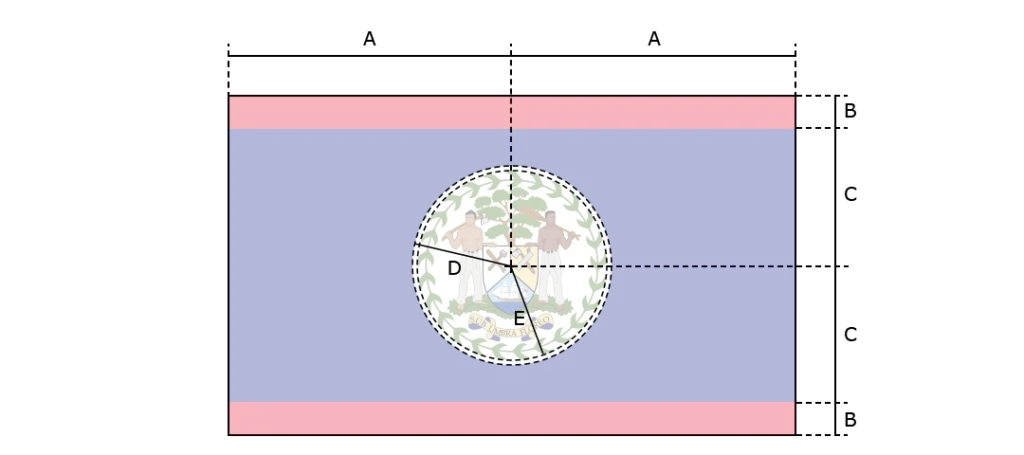
History of the Flag
The origins of the Belizean flag trace back to the colonial period when Belize was known as British Honduras. During this time, the territory was under British rule, and its flag bore the symbols of the British Empire. The Union Jack, with its distinctive red, white, and blue design, flew over Belize as a testament to its status as a British colony.
In the latter half of the 20th century, Belize began its journey towards independence from British rule. As the country moved closer to self-governance, there arose a need for a new flag that would symbolize Belizean identity and aspirations.
In 1950, a competition was held to design a new flag for British Honduras, signalling the desire for greater autonomy and self-expression. The winning design for the new flag of British Honduras was submitted by a local architect named Everal Waight.
On September 21, 1981, Belize finally achieved independence, and the flag was hoisted for the first time, heralding a new era of sovereignty and self-governance.
Organisation Member of
- United Nations
- Commonwealth of Nations
- Organization of American States
- Caribbean Community
- Central American Integration System
Flags of neighbouring countries
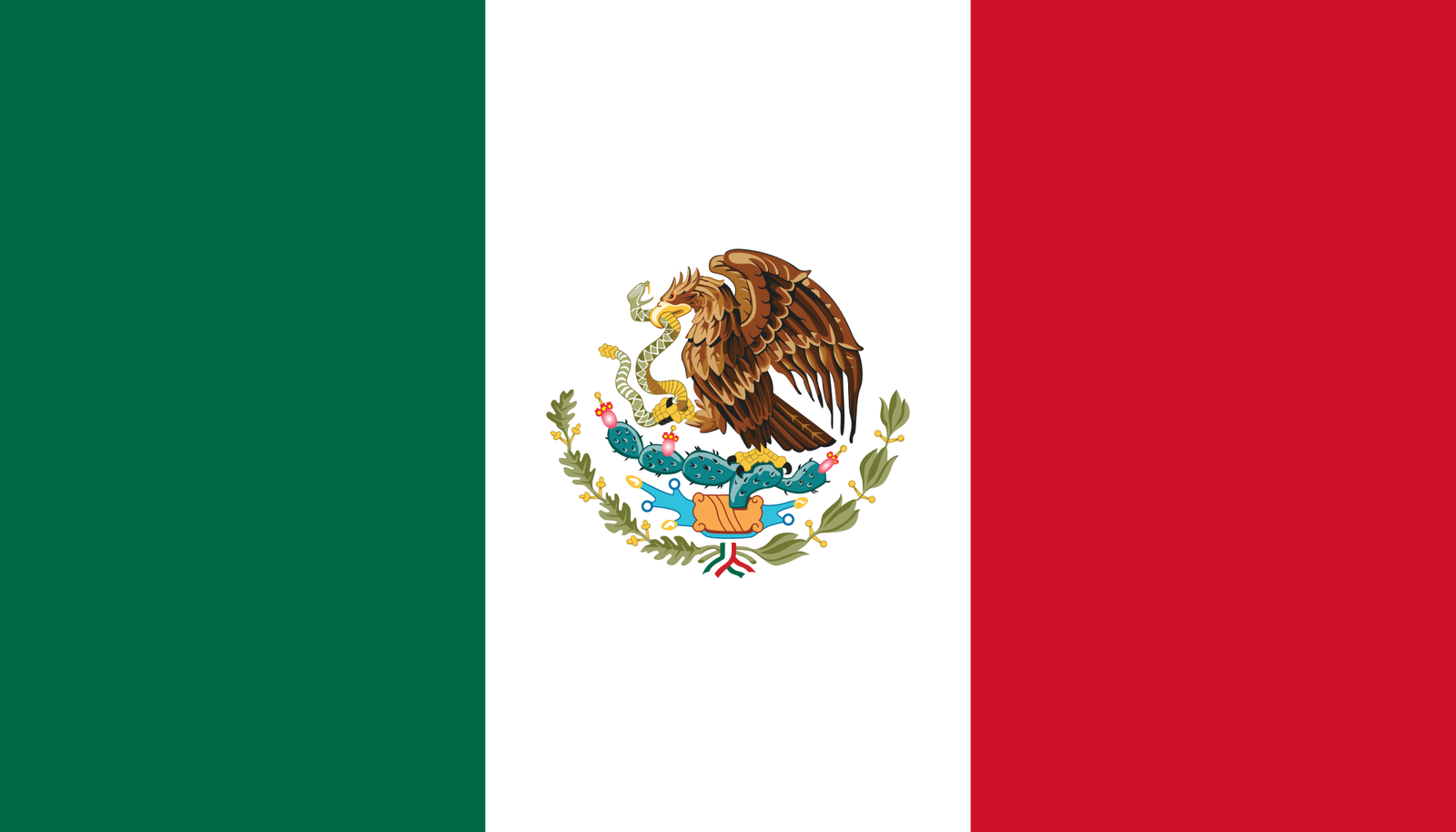 | 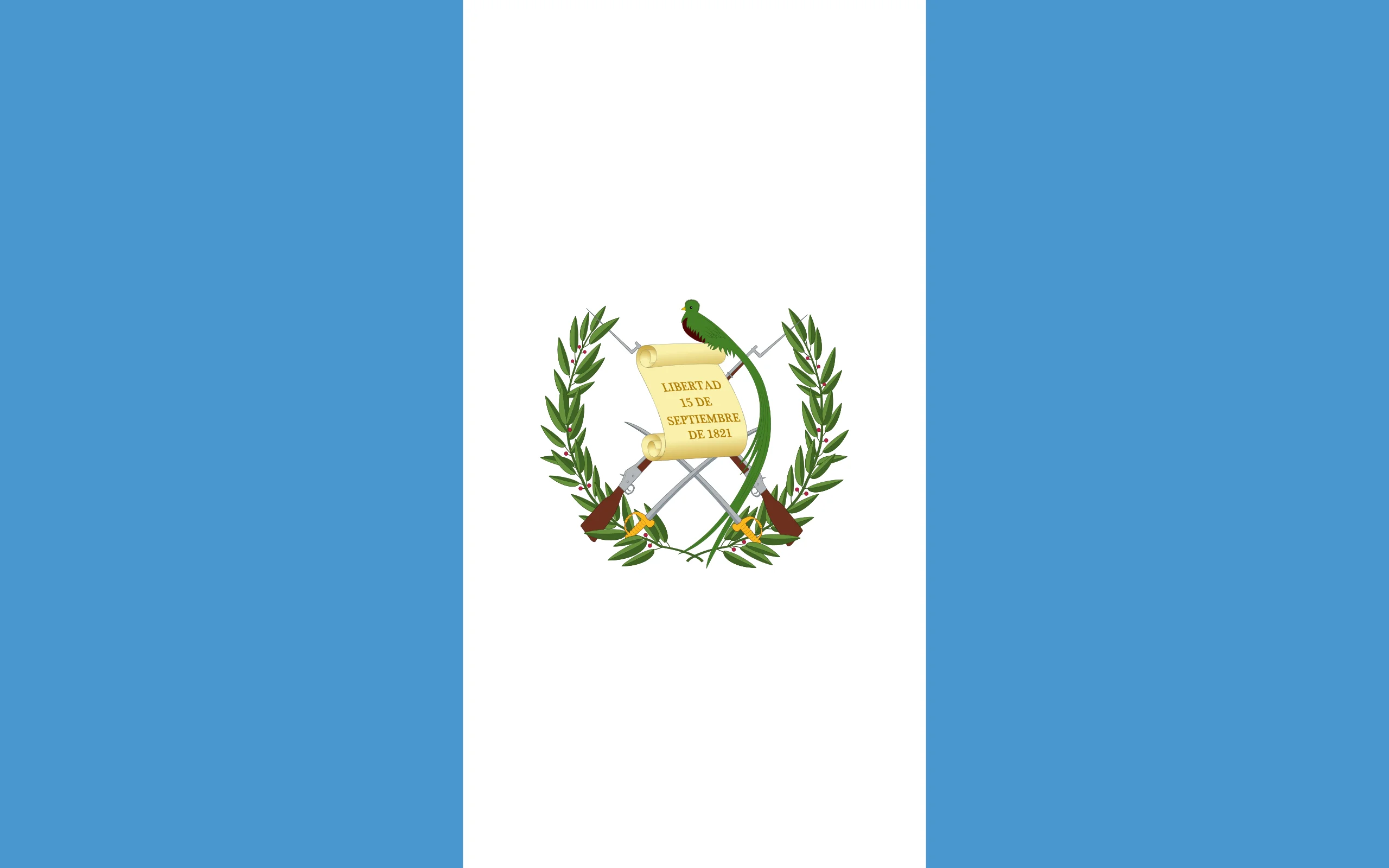 |
